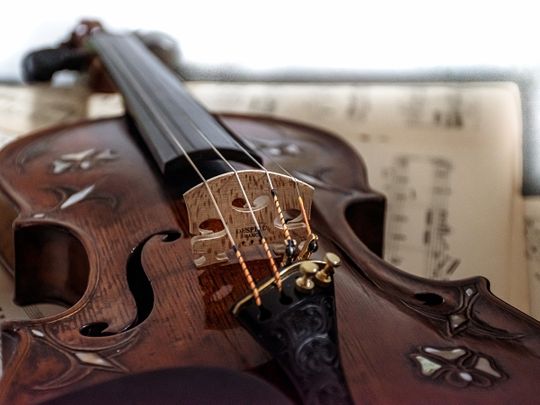
At the end of a song, a music conductor might guide students to a ‘grave tempo’, then easing them into an ‘allegro’, followed by a dramatic finish and a punctuated ‘bravo!’ Those who are unfamiliar with classical music might scratch their heads at this, but for musicians code-switching to Italian is an everyday affair.
Click start to play today’s Word Search, where you might pick up a few Italian musical terminologies.
We call music a universal language, and technically, it is universal because of the little scribbles and symbols lining the music sheets. Notations are what make compositions playable across cultures and time. If a choir were to sing a piece by the ear, then learn a couple more in the next few days, the singers would have to be prodigies to remember every change in pitch and tempo by heart.
Enter medieval Italian monk and music theorist, Guido d’Arezzo. Put in charge of training the singers of the city’s cathedral, Guido invented simpler ways for his students to read music. He gave us the modern do-re-mi-fa-sol-la scale called the solfeggio, except he assigned ‘ut’ as the first syllable – the sol-fa was extracted from the Hymn of St. John “Ut queant laxis”. Students quickly learned to associate the notes with the musical syllables and mastered their multiple chants without a hitch.
As the birthplace of opera in the late 1500s, Italy has long been credited with a highly influential arts and culture scene. So it’s not surprising that most of Italian musical vocabulary has slipped into the general glossary.
We look at a couple that you could pat yourself on the back for recognising when attending a classical concert. Note how some are abstract directions based on feeling and emotion, a unique aspect of Italian music.
1. Alla cappella or a cappella: If you prefer listening to songs void of any instrumental but the vocals, then you might be into a cappella music. The style is inspired by unaccompanied church music.
2. Mezzo forte: Notated as ‘mf’, this tells musicians or singers that they need to switch to a moderately loud tone.
3. Molto allegro: Upon seeing these words, musicians know the tempo or speed says the notes must be played very quickly.
4. Piano: Piano here dictates the strength of the tone, which stands for soft, notated with a 'p'.
5. Dolce: Here, the conductor gets the musicians to play as sweetly as possible. It is up to the players to add that touch of sweetness however they see fit.
6. Con anima: To play with soul.
Do you know any other interesting musical terminologies? Play today’s Crossword and tell us at games@gulfnews.com.






